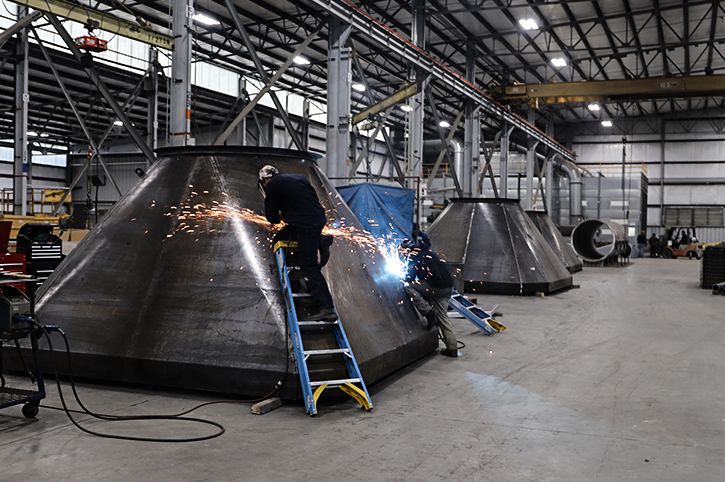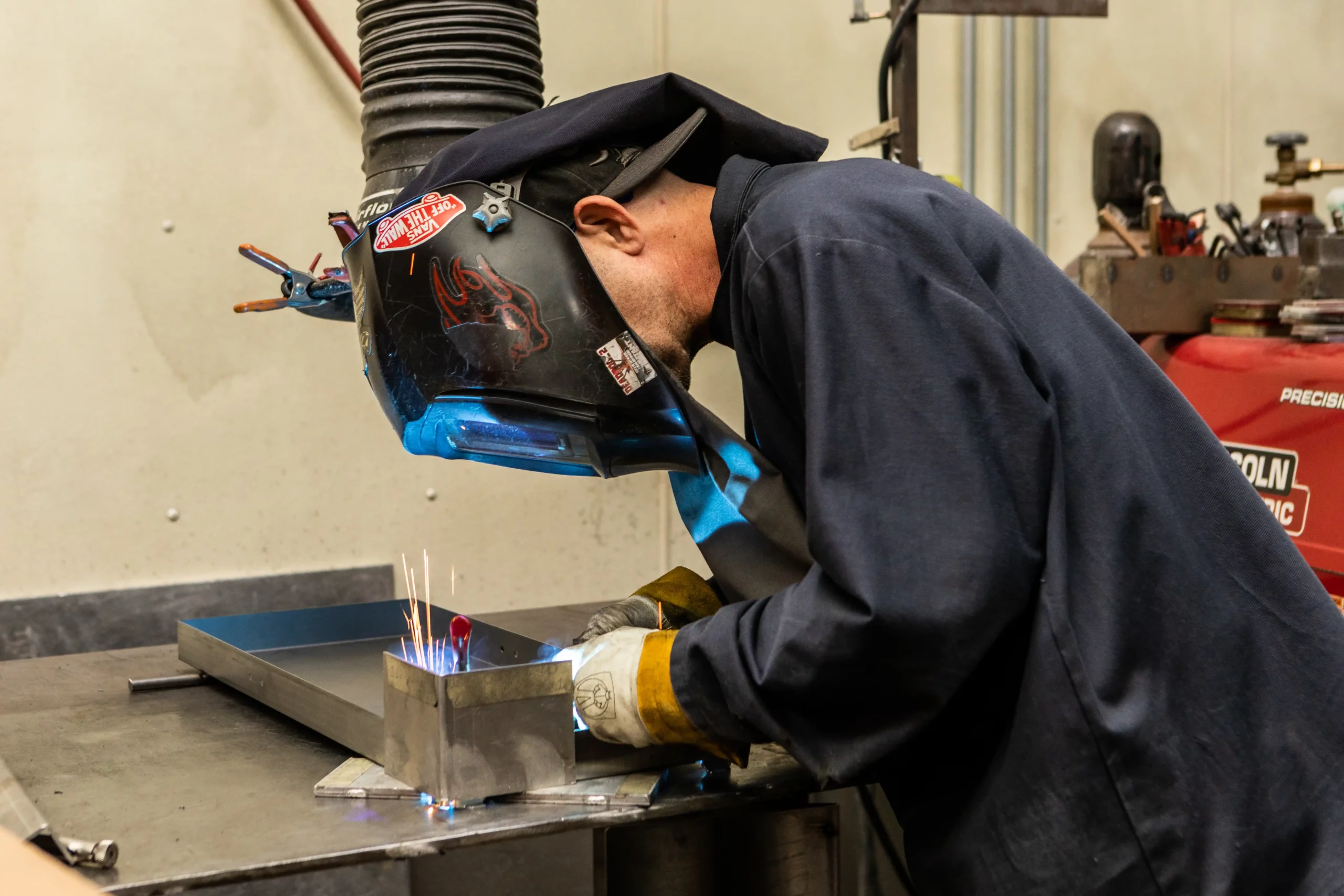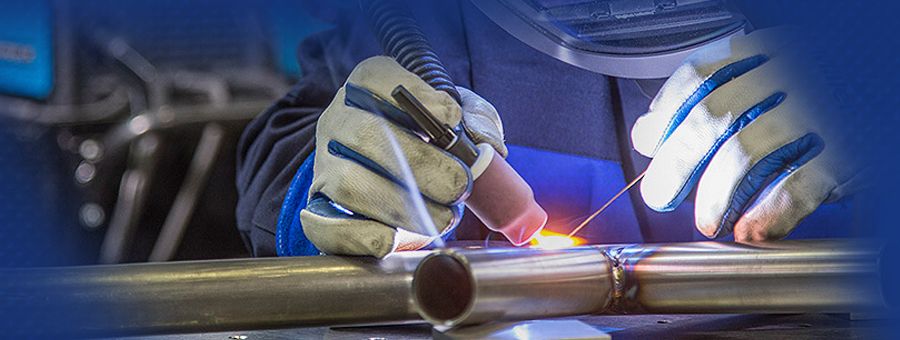Common Welding Fixing Issues and How to Address Them Successfully
Welding fixings frequently come across a range of issues that can jeopardize the stability of the end product. Typical issues consist of inadequate penetration, porosity, and imbalance, to name a few. Each flaw presents special difficulties that call for specific methods for resolution. Understanding these problems is vital for welders aiming to improve their skills and outcomes. This discussion will check out these usual welding repair concerns and reliable techniques to address them.
Poor Penetration
Insufficient infiltration takes place when the weld steel fails to completely fuse with the base material, causing weak joints and prospective architectural failings. This problem usually comes from inadequate heat input, wrong electrode angle, or incorrect welding speed. Welders may experience poor infiltration as a result of a mistake of the necessary specifications for a details product thickness or kind. Additionally, contamination on the base material's surface area can impede reliable bonding, intensifying the problem. To attend to inadequate penetration, welders must assure proper settings on their devices and maintain a clean job surface. Normal assessment of welds is recommended to identify any shortages early, permitting prompt corrections and the prevention of jeopardized structural stability in welded assemblies.
Porosity
Porosity is a typical defect in bonded joints that shows up as small gas bubbles trapped within the weld steel. This issue can compromise the stability of the weld, leading to lowered strength and possible failing under stress. Montana Mobile Welding and Repair Belgrade. Porosity typically develops from contamination, dampness, or incorrect welding strategies, which allow gases to leave into the liquified weld swimming pool. To attend to porosity, welders should ensure proper surface preparation, maintain a tidy workplace, and make use of suitable welding specifications. In addition, choosing the appropriate filler material and protecting gas can alleviate gas entrapment. Normal examination and testing of welds can help determine porosity early, guaranteeing prompt rehabilitative activities are taken, therefore maintaining the top quality and reliability of the bonded framework
Imbalance
Imbalance in welding can emerge from numerous variables, including inappropriate arrangement and thermal development. Understanding the origin creates is important for reliable resolution. A number of modification methods are available to realign parts and ensure structural honesty.
Root causes of Misalignment
Welding imbalance typically stems from a variety of underlying problems that can endanger architectural honesty. One main cause is inappropriate fit-up of elements prior to welding, which can cause spaces and unequal surfaces. Variants in thermal expansion throughout the welding procedure can likewise result in distortion, specifically if the materials being joined have various coefficients of expansion. Furthermore, poor fixturing and securing may fall short to hold elements securely in position, bring about movement throughout welding. Badly maintained devices, consisting of welding equipments and devices, might introduce incongruities in the weld bead, further adding to misalignment. Operator mistake, stemming from inadequate training or experience, can likewise play a significant duty in creating misaligned welds.

Correction Techniques Readily Available
Resolving misalignment successfully needs a combination of corrective methods tailored to the specific concerns available. One common approach is the use of fixtures or jigs to hold components in the right setting throughout welding, making certain regular alignment. Additionally, pre-heating the materials can help reduce distortion and improve fit-up. For substantial misalignment, mechanical adjustment strategies, such as making use of hydraulic jacks or clamps, can be employed to fix the placement prior to welding. Post-weld warm treatment may also be necessary to alleviate stresses brought on by misalignment. Ultimately, cautious evaluation and modification during the arrangement phase can avoid misalignment problems from becoming significant troubles, advertising a smoother welding process and enhancing general architectural honesty.
Distortion
Distortion is an usual difficulty in welding that can develop from different factors, including irregular heating & cooling. Understanding the reasons for distortion is important for implementing efficient prevention strategies. Addressing this issue not only enhances structural honesty however additionally enhances the general top quality of the weld.
Reasons for Distortion
When subjected to the extreme heat of welding, products usually go through changes that can cause distortion. This sensation primarily arises from thermal expansion and contraction throughout the welding procedure. As the weld area warms up, the material increases; upon cooling, it acquires, which can produce internal anxieties. Additionally, unequal heating across a workpiece can intensify these stresses, resulting in bending or bending. The kind of product also plays a considerable role; metals with varying thermal conductivity and coefficients of expansion might react in different ways, bring about uncertain distortions. Poor joint design and inadequate fixturing can add to misalignment throughout welding, raising the chance of distortion. Comprehending these causes is necessary for efficient welding repair service and prevention strategies.
Avoidance Techniques
Efficient avoidance techniques for distortion during welding emphasis on regulating warmth input and making sure proper joint style. Maintaining a consistent warmth input helps to decrease thermal development and tightening, which can result in distortion. Making use of methods such as pre-heating the workpiece can also lower the temperature gradient, promoting consistent try this website heating. In addition, choosing appropriate joint layouts, such as T-joints or lap joints, can boost stability and minimize stress and anxiety focus. Implementing correct fixturing to safeguard the workpieces in page position even more help in keeping positioning during the welding procedure. Staggered welding sequences can disperse warm more evenly, protecting against local distortion. By applying these techniques, welders can considerably reduce the chance of distortion and improve the overall quality of their welds.
Breaking
Splitting is an usual issue come across in welding fixings, typically arising from different aspects such as incorrect cooling rates, material option, or poor joint prep work. The occurrence of fractures can greatly endanger the honesty of the weld, resulting in potential failings throughout procedure. To address this concern, welders must initially examine the source, guaranteeing that products work and properly chosen for the specific application. In addition, managing the cooling rate throughout the welding process is necessary; fast air conditioning can generate tension and result in splitting. Correct joint layout and preparation also add to minimizing the danger. Implementing these approaches can enhance weld high quality and toughness, ultimately reducing the chance of splitting in ended up weldments.

Insufficient Fusion
A considerable problem in welding repairs is insufficient combination, which takes place when the weld metal does not properly bond with the base product or previous weld passes - Fabrication. This flaw can result in weak points in the joint, possibly compromising the honesty of the welded framework. Factors adding to insufficient blend include not enough warmth input, improper welding method, and contamination of the surface areas being signed up with. To address this issue effectively, welders need to assure proper pre-weld cleaning and surface prep work, in addition to readjust their welding specifications to achieve adequate penetration and blend. Routine inspection throughout the welding procedure can additionally aid determine insufficient combination early, enabling timely corrective actions to boost the total top quality of the weld
Overheating
While welding repair work can boost structural integrity, overheating provides a considerable challenge that can result in material deterioration. Excessive heat during welding can alter the mechanical buildings of steels, leading to minimized strength, increased brittleness, Home Page and warping. This sensation is specifically critical in high-stress applications where architectural reliability is vital. Determining getting too hot can involve visual inspections for staining or distortion, in addition to keeping track of temperature throughout the welding process. To minimize the dangers linked with getting too hot, welders must utilize ideal strategies, such as regulating heat input, adjusting travel speed, and using appropriate filler materials. In addition, applying pre- and post-weld warm treatments can aid restore material buildings and enhance the overall top quality of the repair service, making sure long-lasting performance and safety.
Regularly Asked Questions
What Are the Typical Signs of a Welding Flaw?

Exactly How Can I Evaluate My Welds for High quality?
To examine welds for top quality, one can use aesthetic inspections, ultrasonic screening, and radiographic approaches. Each method ensures architectural stability, recognizes problems, and confirms adherence to specified standards, ultimately boosting the integrity of the bonded joints.
What Safety Preventative Measures Should I Take While Welding?
When welding, one need to focus on security by wearing suitable individual safety tools, ensuring proper ventilation, protecting combustible products away, preserving a tidy work area, and recognizing surroundings to protect against accidents and injuries.
Can I Fix a Weld Without Remodeling the Entire Joint?
Fixing a weld without redesigning the entire joint is possible, relying on the damage (Belgrade Fabrication). Strategies such as grinding, adding filler product, or making use of a welding process can successfully deal with certain flaws while protecting the surrounding framework
What Equipment Are Important for Reliable Welding Repair Works?
Necessary tools for reliable welding fixings include a welding machine, wire brush, mill, safety gear, clamps, and filler materials. Each tool plays a crucial duty in guaranteeing high quality and safety and security throughout the fixing procedure. Porosity typically emerges from contamination, moisture, or improper welding methods, which allow gases to get away right into the liquified weld pool. Poorly kept tools, consisting of welding makers and tools, might introduce incongruities in the weld bead, additional adding to misalignment. When subjected to the intense warm of welding, materials usually undertake modifications that can lead to distortion. Cracking is a common problem experienced in welding fixings, frequently resulting from numerous elements such as inappropriate air conditioning rates, material option, or poor joint preparation. A substantial issue in welding repair work is incomplete combination, which occurs when the weld metal does not effectively bond with the base material or previous weld passes.